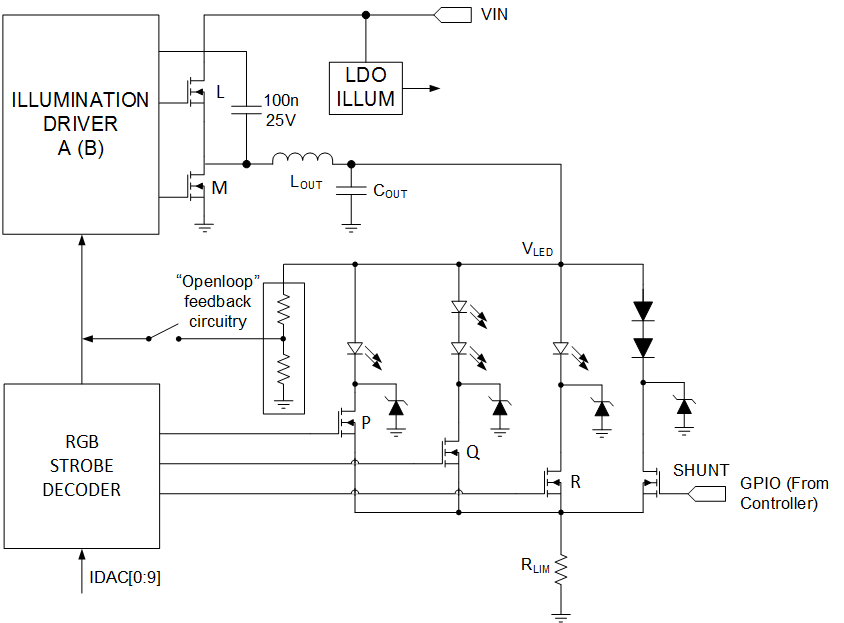DLPS132 May 2018 DLPA4000
PRODUCTION DATA.
- 1 Features
- 2 Applications
- 3 Description
- 4 Revision History
- 5 Pin Configuration and Functions
- 6 Specifications
-
7 Detailed Description
- 7.1 Overview
- 7.2 Functional Block Description
- 7.3
Feature Description
- 7.3.1 Supply and Monitoring
- 7.3.2 Illumination
- 7.3.3 External Power MOSFET Selection
- 7.3.4 DMD Supplies
- 7.3.5 Buck Converters
- 7.3.6 Auxiliary LDOs
- 7.3.7 Measurement System
- 7.4 Device Functional Modes
- 7.5 Programming
- 7.6 Register Maps
- 8 Application and Implementation
- 9 Power Supply Recommendations
- 10Layout
- 11Device and Documentation Support
- 12Mechanical, Packaging, and Orderable Information
Package Options
Mechanical Data (Package|Pins)
- PFD|100
Thermal pad, mechanical data (Package|Pins)
- PFD|100
Orderable Information
7.3.2 Illumination
The illumination function includes all blocks needed to generate light for the DLP system. The device uses a control loop to accurately set the current through the LEDs (see Figure 4). Use IDAC[9:0] to set the intended LED current. The Illumination driver controls the LED anode voltage VLED and as a result a current flows through one of the LEDs. The voltage across the sense resistor (RLIM) measures the LED current. Based on the difference between the actual and intended current, the loop controls the output of the buck converter (VLED) higher or lower. Switches P, Q, and R control the LED which conducts the current. The Openloop feedback circuitry" confirms that the control loop can be closed for cases when there is no path via the LED (for instance, when ILED= 0 A).
 Figure 4. Illumination Control Loop
Figure 4. Illumination Control Loop
These blocks comprise the illumination control loop.
- Programmable gain block
- LDO illum, analog supply voltage for internal illumination blocks
- Illumination driver A, primary driver for the external FETs
- RGB strobe decoder, driver for external switches to control the on-off rhythm of the LEDs and measures the LED current